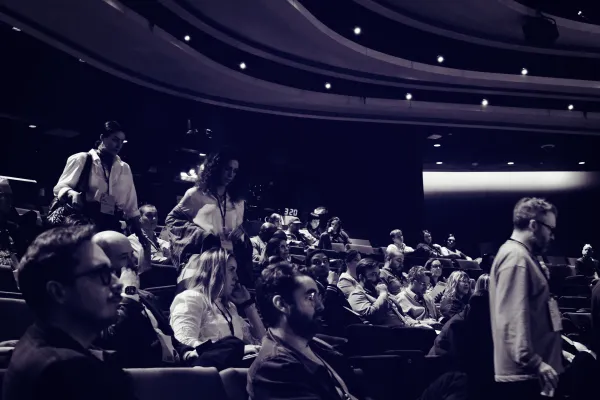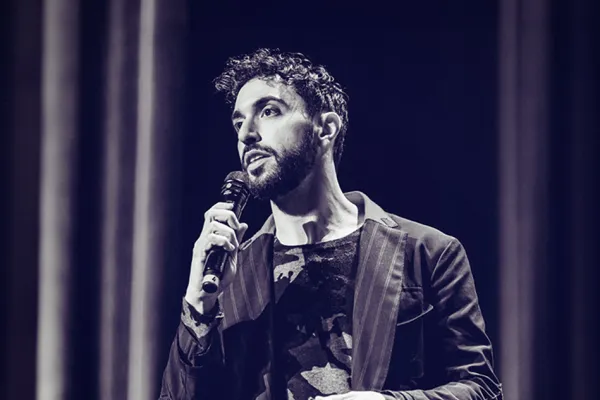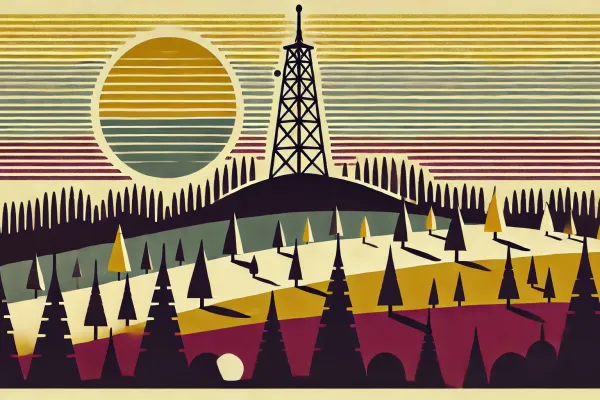
 Details
Details
When Auguste and Louis Lumière invented the moving picture camera they inadvertently gave name to a law that since has been known as Lumière’s law.
That we tend to use new innovations the way we use old technologies.
Because, in 1895, the two brothers weren’t really sure how to use their new invention. Sp they did what they knew. What they were used to. They set up the moving picture camera like they would a regular camera.
And after touring cities across the states showcasing the camera, the brothers came to one (wrong) conclusion: The moving picture was an invention without a future.
That’s how Andrew Davis, Keynote Speaker & Author, kicked off the Branded Content Days 2025 in New York on Thursday, April 3rd, at the Dotdash Meredith Event Center overlooking the Hudson River.
We all, Davies argued, fall victims to Lumière’s law. Case in point; Generative AI.
Generative AI is used like Google. Instead of Google it, the audience screamed ChatGPT it! We’re using a new innovation the way we use old technologies, turning Generative AI into Generic AI.
For marketers, content creators, publishers and studios to unlock the true potential of AI, they need to find it’s true superpower, Davies told the audience.
To do this, Davies analysed the strength of AI, dividing it into four themes:
- Natural language understanding and generation
- Knowledge extraction and information retrieval
- Text clarification and sentiment analysis
- Mimicry and imitation
Mimicry and imitation are AI's biggest strengths, Davies concluded, explaining that it can be used to our advantage by creating a digital doppelgänger. Instead of hiding the use of AI studios and publishers should put more of themselves into AI.
By imprinting your essence to AI, you can start working with AI as a team enabling you use the technology in new ways unlocking it’s true superpower.
Publishers need to think like creators
When he was at Vice, Lars Bengston, now Chief Content Officer at Havas, used to say that brands need to think like publishers.
In recent years, he has added to that sentence. Now, publishers need to think like creators.
Because creators have cracked the code. They’ve built entire ecosystems by doing their homework, knowing their audience, and delivering content with relentless consistency.
They’ve adopted new storytelling structures, embraced serialization, and mastered platforms that thrive on time-spent not just impressions. Watch time has become the new currency of attention, and creators are minting it daily.
Meanwhile, publishers are no longer the gatekeepers of culture platforms are. And creators? They’ve become publishers, studios, and media agencies all in one.
For traditional publishers, it’s not a threat. It’s an opportunity. To collaborate, not compete. To learn from the methods that built direct relationships with millions. To explore monetization models driven by adoration, not interruption. To create digital IP that earns loyalty, not just views.
And brands are already catching on. Those that adopt creator-led strategies see up to 5x higher engagement than traditional placements. Serialized, long-form content is leading the charge.
The future? It's not just about producing content it’s about producing content that makes the audience want to stay engaged.
B2B marketers have problems
And speaking of creators. Dennis Quinn, Co-Head of Creative at The Washington Post, and his team have been rethinking B2B content with the help of content creators.
Because as he said in his presentation, if you’re a B2B marketer, you've got problems.
At any given time, 95% of BDMs are not actively seeking a B2B product or service. The answer to getting them to consider a B2B solution is often to produce thought leadership content.
The issue, however, argues Quinn, is that 85% percent of BDMs think most thought leadership content isn’t very good.
To create great thought leadership content it needs to come from a well-respected subject matter expert. The SME has it all, Quinn says. Credentials, authority and a face.
87% of buyers want to hear from creators in their own industry. His point his that, working with creators whose expertise is rooted in their professional, lived experience provides content that is immediately useful and empowering to the audience.





